Search for Indicators
All Data
Indicator Gauge Icon Legend
Legend Colors
Red is bad, green is good, blue is not statistically different/neutral.
Compared to Distribution
 the value is in the best half of communities.
the value is in the best half of communities.
 the value is in the 2nd worst quarter of communities.
the value is in the 2nd worst quarter of communities.
 the value is in the worst quarter of communities.
the value is in the worst quarter of communities.
Compared to Target
 meets target;
meets target;  does not meet target.
does not meet target.
Compared to a Single Value
 lower than the comparison value;
lower than the comparison value;
 higher than the comparison value;
higher than the comparison value;
 not statistically different from comparison value.
not statistically different from comparison value.
Trend

 non-significant change over time;
non-significant change over time; 
 significant change over time;
significant change over time;  no change over time.
no change over time.
Compared to Prior Value
 higher than the previous measurement period;
higher than the previous measurement period;
 lower than the previous measurement period;
lower than the previous measurement period;
 no statistically different change from previous measurement period.
no statistically different change from previous measurement period.
State: Hawaii
Economy / Income
Value
Compared to:
29.0%
(2022)
Compared to:



Prior Value
(30.0%)
Prior Value compares a measured value with the previously measured value. Confidence intervals were not taken into account in determining the direction of the comparison.

Trend
This comparison measures the indicator’s values over multiple time periods.<br>The Mann-Kendall Test for Statistical Significance is used to evaluate the trend<br>over 4 to 10 periods of measure, subject to data availability and comparability.
State: Hawaii Income Inequality
State: Hawaii Income Inequality
0.447
(2018-2022)
Compared to:




U.S. States
The distribution is based on data from 50 U.S. states and the District of Columbia.

US Value
(0.483)
The regional value is compared to the national value.

Trend
This comparison measures the indicator’s values over multiple time periods.<br>The Mann-Kendall Test for Statistical Significance is used to evaluate the trend<br>over 4 to 10 periods of measure, subject to data availability and comparability.
State: Hawaii Median Household Income
State: Hawaii Median Household Income
$94,814
(2018-2022)
Compared to:
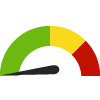



U.S. States
The distribution is based on data from 50 U.S. states and the District of Columbia.

US Value
($75,149)
The regional value is compared to the national value.

Trend
This comparison measures the indicator’s values over multiple time periods.<br>The Mann-Kendall Test for Statistical Significance is used to evaluate the trend<br>over 4 to 10 periods of measure, subject to data availability and comparability.
State: Hawaii Per Capita Income
State: Hawaii Per Capita Income
$42,683
(2018-2022)
Compared to:




U.S. States
The distribution is based on data from 50 U.S. states and the District of Columbia.

US Value
($41,261)
The regional value is compared to the national value.

Trend
This comparison measures the indicator’s values over multiple time periods.<br>The Mann-Kendall Test for Statistical Significance is used to evaluate the trend<br>over 4 to 10 periods of measure, subject to data availability and comparability.
State: Hawaii
Economy / Investment & Personal Finance
Value
Compared to:
State: Hawaii Adults who Feel Overwhelmed by Financial Burdens
State: Hawaii Adults who Feel Overwhelmed by Financial Burdens
34.4%
(2023)
Compared to:




U.S. States
The distribution is based on data from 50 U.S. states and the District of Columbia.

US Value
(37.6%)
The regional value is compared to the national value.

Prior Value
(43.5%)
Prior Value compares a measured value with the previously measured value. Confidence intervals were not taken into account in determining the direction of the comparison.
1.9%
(2023)
Compared to:



US Value
(2.2%)
The regional value is compared to the national value.

Prior Value
(2.2%)
Prior Value compares a measured value with the previously measured value. Confidence intervals were not taken into account in determining the direction of the comparison.
State: Hawaii Households with a 401k Plan
State: Hawaii Households with a 401k Plan
45.1%
(2023)
Compared to:



US Value
(40.1%)
The regional value is compared to the national value.

Prior Value
(44.3%)
Prior Value compares a measured value with the previously measured value. Confidence intervals were not taken into account in determining the direction of the comparison.
State: Hawaii Households with a Savings Account
State: Hawaii Households with a Savings Account
75.3%
(2023)
Compared to:




U.S. States
The distribution is based on data from 50 U.S. states and the District of Columbia.

US Value
(71.1%)
The regional value is compared to the national value.

Prior Value
(75.8%)
Prior Value compares a measured value with the previously measured value. Confidence intervals were not taken into account in determining the direction of the comparison.
State: Hawaii Households with Student Loan Debt
State: Hawaii Households with Student Loan Debt
10.4%
(2023)
Compared to:



US Value
(10.3%)
The regional value is compared to the national value.

Prior Value
(10.3%)
Prior Value compares a measured value with the previously measured value. Confidence intervals were not taken into account in determining the direction of the comparison.
State: Hawaii
Economy / Poverty
Value
Compared to:
State: Hawaii Children Living Below 200% of Poverty Level
State: Hawaii Children Living Below 200% of Poverty Level
29.9%
(2022)
Compared to:
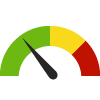




U.S. States
The distribution is based on data from 50 U.S. states and the District of Columbia.

US Value
(36.5%)
The regional value is compared to the national value.

Prior Value
(29.4%)
Prior Value compares a measured value with the previously measured value. Confidence intervals were not taken into account in determining the direction of the comparison.

Trend
This comparison measures the indicator’s values over multiple time periods.<br>The Mann-Kendall Test for Statistical Significance is used to evaluate the trend<br>over 4 to 10 periods of measure, subject to data availability and comparability.
State: Hawaii Children Living Below Poverty Level
State: Hawaii Children Living Below Poverty Level
12.4%
(2018-2022)
Compared to:




U.S. States
The distribution is based on data from 50 U.S. states and the District of Columbia.

US Value
(16.7%)
The regional value is compared to the national value.

Trend
This comparison measures the indicator’s values over multiple time periods.<br>The Mann-Kendall Test for Statistical Significance is used to evaluate the trend<br>over 4 to 10 periods of measure, subject to data availability and comparability.
State: Hawaii Families Living Below 200% of Poverty Level
State: Hawaii Families Living Below 200% of Poverty Level
17.6%
(2022)
Compared to:





U.S. States
The distribution is based on data from 50 U.S. states and the District of Columbia.

US Value
(22.5%)
The regional value is compared to the national value.

Prior Value
(18.3%)
Prior Value compares a measured value with the previously measured value. Confidence intervals were not taken into account in determining the direction of the comparison.

Trend
This comparison measures the indicator’s values over multiple time periods.<br>The Mann-Kendall Test for Statistical Significance is used to evaluate the trend<br>over 4 to 10 periods of measure, subject to data availability and comparability.
State: Hawaii Families Living Below Poverty Level
State: Hawaii Families Living Below Poverty Level
6.5%
(2018-2022)
Compared to:
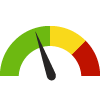



U.S. States
The distribution is based on data from 50 U.S. states and the District of Columbia.

US Value
(8.8%)
The regional value is compared to the national value.

Trend
This comparison measures the indicator’s values over multiple time periods.<br>The Mann-Kendall Test for Statistical Significance is used to evaluate the trend<br>over 4 to 10 periods of measure, subject to data availability and comparability.
State: Hawaii Households Living Below Poverty Level
State: Hawaii Households Living Below Poverty Level
15.0%
(2022)
Compared to:



Prior Value
(12.0%)
Prior Value compares a measured value with the previously measured value. Confidence intervals were not taken into account in determining the direction of the comparison.

Trend
This comparison measures the indicator’s values over multiple time periods.<br>The Mann-Kendall Test for Statistical Significance is used to evaluate the trend<br>over 4 to 10 periods of measure, subject to data availability and comparability.
State: Hawaii People 65+ Living Below 200% of Poverty Level
State: Hawaii People 65+ Living Below 200% of Poverty Level
20.5%
(2022)
Compared to:





U.S. States
The distribution is based on data from 50 U.S. states and the District of Columbia.

US Value
(28.0%)
The regional value is compared to the national value.

Prior Value
(22.4%)
Prior Value compares a measured value with the previously measured value. Confidence intervals were not taken into account in determining the direction of the comparison.

Trend
This comparison measures the indicator’s values over multiple time periods.<br>The Mann-Kendall Test for Statistical Significance is used to evaluate the trend<br>over 4 to 10 periods of measure, subject to data availability and comparability.
State: Hawaii People 65+ Living Below Poverty Level
State: Hawaii People 65+ Living Below Poverty Level
8.2%
(2018-2022)
Compared to:




U.S. States
The distribution is based on data from 50 U.S. states and the District of Columbia.

US Value
(10.0%)
The regional value is compared to the national value.

Trend
This comparison measures the indicator’s values over multiple time periods.<br>The Mann-Kendall Test for Statistical Significance is used to evaluate the trend<br>over 4 to 10 periods of measure, subject to data availability and comparability.
State: Hawaii People 65+ Living Below Poverty Level (Count)
State: Hawaii People 65+ Living Below Poverty Level (Count)
22,532
People
(2018-2022)
Compared to:


Trend
This comparison measures the indicator’s values over multiple time periods.<br>The Mann-Kendall Test for Statistical Significance is used to evaluate the trend<br>over 4 to 10 periods of measure, subject to data availability and comparability.
State: Hawaii People Living Below 200% of Poverty Level
State: Hawaii People Living Below 200% of Poverty Level
23.1%
(2022)
Compared to:





U.S. States
The distribution is based on data from 50 U.S. states and the District of Columbia.

US Value
(28.4%)
The regional value is compared to the national value.

Prior Value
(23.4%)
Prior Value compares a measured value with the previously measured value. Confidence intervals were not taken into account in determining the direction of the comparison.

Trend
This comparison measures the indicator’s values over multiple time periods.<br>The Mann-Kendall Test for Statistical Significance is used to evaluate the trend<br>over 4 to 10 periods of measure, subject to data availability and comparability.
State: Hawaii People Living Below Poverty Level
State: Hawaii People Living Below Poverty Level
9.6%
(2018-2022)
Compared to:
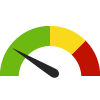




U.S. States
The distribution is based on data from 50 U.S. states and the District of Columbia.

US Value
(12.5%)
The regional value is compared to the national value.

Trend
This comparison measures the indicator’s values over multiple time periods.<br>The Mann-Kendall Test for Statistical Significance is used to evaluate the trend<br>over 4 to 10 periods of measure, subject to data availability and comparability.

HP 2030 Target
(8.0%)
<div>SDOH-01: Reduce the proportion of people living in poverty</div>
State: Hawaii Youth not in School or Working
State: Hawaii Youth not in School or Working
2.7%
(2018-2022)
Compared to:
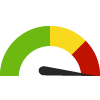



U.S. States
The distribution is based on data from 50 U.S. states and the District of Columbia.

US Value
(1.8%)
The regional value is compared to the national value.

Trend
This comparison measures the indicator’s values over multiple time periods.<br>The Mann-Kendall Test for Statistical Significance is used to evaluate the trend<br>over 4 to 10 periods of measure, subject to data availability and comparability.
State: Hawaii
Education / Childcare & Early Childhood Education
Value
Compared to:
State: Hawaii Child Care Centers
State: Hawaii Child Care Centers
7.1
Per 1,000 population under age 5
(2022)
Compared to:



US Value
(7.0)
The regional value is compared to the national value.

Prior Value
(5.8)
Prior Value compares a measured value with the previously measured value. Confidence intervals were not taken into account in determining the direction of the comparison.
State: Hawaii Day Care Center and Preschool Spending-to-Income Ratio
State: Hawaii Day Care Center and Preschool Spending-to-Income Ratio
7.3%
(2023)
Compared to:
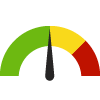


U.S. States
The distribution is based on data from 50 U.S. states and the District of Columbia.

Prior Value
(7.3%)
Prior Value compares a measured value with the previously measured value. Confidence intervals were not taken into account in determining the direction of the comparison.
State: Hawaii Home Child Care Spending-to-Income Ratio
State: Hawaii Home Child Care Spending-to-Income Ratio
3.1%
(2023)
Compared to:



U.S. States
The distribution is based on data from 50 U.S. states and the District of Columbia.

Prior Value
(3.1%)
Prior Value compares a measured value with the previously measured value. Confidence intervals were not taken into account in determining the direction of the comparison.
0
Requirements
(2017)
Compared to:




Prior Value
Prior Value compares a measured value with the previously measured value. Confidence intervals were not taken into account in determining the direction of the comparison.

Trend
This comparison measures the indicator’s values over multiple time periods.<br>The Mann-Kendall Test for Statistical Significance is used to evaluate the trend<br>over 4 to 10 periods of measure, subject to data availability and comparability.

PAN Plan Target
(1)
State: Hawaii
Education / Educational Attainment
Value
Compared to:
State: Hawaii College Tuition Spending-to-Income Ratio
State: Hawaii College Tuition Spending-to-Income Ratio
11.4%
(2023)
Compared to:



U.S. States
The distribution is based on data from 50 U.S. states and the District of Columbia.

Prior Value
(11.4%)
Prior Value compares a measured value with the previously measured value. Confidence intervals were not taken into account in determining the direction of the comparison.
State: Hawaii Community Spending on Education
State: Hawaii Community Spending on Education
2.3%
(2023)
Compared to:



US Value
(2.4%)
The regional value is compared to the national value.

Prior Value
(2.3%)
Prior Value compares a measured value with the previously measured value. Confidence intervals were not taken into account in determining the direction of the comparison.
State: Hawaii People 25+ with a Bachelor's Degree or Higher
State: Hawaii People 25+ with a Bachelor's Degree or Higher
34.7%
(2018-2022)
Compared to:




U.S. States
The distribution is based on data from 50 U.S. states and the District of Columbia.

US Value
(34.3%)
The regional value is compared to the national value.

Trend
This comparison measures the indicator’s values over multiple time periods.<br>The Mann-Kendall Test for Statistical Significance is used to evaluate the trend<br>over 4 to 10 periods of measure, subject to data availability and comparability.
State: Hawaii People 25+ with a High School Diploma or Higher
State: Hawaii People 25+ with a High School Diploma or Higher
92.7%
(2018-2022)
Compared to:




U.S. States
The distribution is based on data from 50 U.S. states and the District of Columbia.

US Value
(89.1%)
The regional value is compared to the national value.

Trend
This comparison measures the indicator’s values over multiple time periods.<br>The Mann-Kendall Test for Statistical Significance is used to evaluate the trend<br>over 4 to 10 periods of measure, subject to data availability and comparability.
State: Hawaii Student Loan Spending-to-Income Ratio
State: Hawaii Student Loan Spending-to-Income Ratio
4.4%
(2023)
Compared to:



U.S. States
The distribution is based on data from 50 U.S. states and the District of Columbia.

Prior Value
(4.5%)
Prior Value compares a measured value with the previously measured value. Confidence intervals were not taken into account in determining the direction of the comparison.
1.4%
(2023)
Compared to:



U.S. States
The distribution is based on data from 50 U.S. states and the District of Columbia.

Prior Value
(1.5%)
Prior Value compares a measured value with the previously measured value. Confidence intervals were not taken into account in determining the direction of the comparison.
State: Hawaii
Education / School Environment
Value
Compared to:
State: Hawaii Adolescent School Safety
State: Hawaii Adolescent School Safety
95.6%
(2020-2021)
Compared to:




US Value
(98.2%)
The regional value is compared to the national value.

Prior Value
(96.4%)
Prior Value compares a measured value with the previously measured value. Confidence intervals were not taken into account in determining the direction of the comparison.

Trend
This comparison measures the indicator’s values over multiple time periods.<br>The Mann-Kendall Test for Statistical Significance is used to evaluate the trend<br>over 4 to 10 periods of measure, subject to data availability and comparability.
State: Hawaii Adolescents who Consider School Work to Be Important
State: Hawaii Adolescents who Consider School Work to Be Important
30.8%
(2015-2018)
Compared to:




US Value
(29.8%)
The regional value is compared to the national value.

Prior Value
(27.5%)
Prior Value compares a measured value with the previously measured value. Confidence intervals were taken into account in determining the direction of the comparison.

Trend
This comparison measures the indicator’s values over multiple time periods.<br>The Mann-Kendall Test for Statistical Significance is used to evaluate the trend<br>over 4 to 10 periods of measure, subject to data availability and comparability.
1
Positions
(2016)
Compared to:



Prior Value
(1)
Prior Value compares a measured value with the previously measured value. Confidence intervals were not taken into account in determining the direction of the comparison.

PAN Plan Target
(1)
State: Hawaii Positions Supporting School Gardens and Agriculture
State: Hawaii Positions Supporting School Gardens and Agriculture
1
Positions
(2017)
Compared to:




Prior Value
(1)
Prior Value compares a measured value with the previously measured value. Confidence intervals were not taken into account in determining the direction of the comparison.

Trend
This comparison measures the indicator’s values over multiple time periods.<br>The Mann-Kendall Test for Statistical Significance is used to evaluate the trend<br>over 4 to 10 periods of measure, subject to data availability and comparability.

PAN Plan Target
(2)
State: Hawaii Schools with Gardens
State: Hawaii Schools with Gardens
87.9%
(2016-2017)
Compared to:




Prior Value
(87.0%)
Prior Value compares a measured value with the previously measured value. Confidence intervals were not taken into account in determining the direction of the comparison.

Trend
This comparison measures the indicator’s values over multiple time periods.<br>The Mann-Kendall Test for Statistical Significance is used to evaluate the trend<br>over 4 to 10 periods of measure, subject to data availability and comparability.

PAN Plan Target
(87%)
State: Hawaii Schools with Gardens Used for Instruction
State: Hawaii Schools with Gardens Used for Instruction
91.6%
(2016-2017)
Compared to:




Prior Value
(94.7%)
Prior Value compares a measured value with the previously measured value. Confidence intervals were not taken into account in determining the direction of the comparison.

Trend
This comparison measures the indicator’s values over multiple time periods.<br>The Mann-Kendall Test for Statistical Significance is used to evaluate the trend<br>over 4 to 10 periods of measure, subject to data availability and comparability.

PAN Plan Target
(90%)
State: Hawaii
Education / Student Performance K-12
Value
Compared to:
State: Hawaii 4th Grade Math Skills
State: Hawaii 4th Grade Math Skills
37.0%
(2022)
Compared to:




US Value
(35.1%)
The regional value is compared to the national value.

Prior Value
(39.8%)
Prior Value compares a measured value with the previously measured value. Confidence intervals were taken into account in determining the direction of the comparison.

Trend
This comparison measures the indicator’s values over multiple time periods.<br>The Mann-Kendall Test for Statistical Significance is used to evaluate the trend<br>over 4 to 10 periods of measure, subject to data availability and comparability.
State: Hawaii 4th Grade Reading Skills
State: Hawaii 4th Grade Reading Skills
35.2%
(2022)
Compared to:





US Value
(32.1%)
The regional value is compared to the national value.

Prior Value
(33.8%)
Prior Value compares a measured value with the previously measured value. Confidence intervals were taken into account in determining the direction of the comparison.

Trend
This comparison measures the indicator’s values over multiple time periods.<br>The Mann-Kendall Test for Statistical Significance is used to evaluate the trend<br>over 4 to 10 periods of measure, subject to data availability and comparability.

HP 2030 LHI
(41.5%)
<div><span>AH-05: Increase the proportion of 4th-graders with reading skills at or above the proficient level <strong>(LEADING HEALTH INDICATOR)</strong><br /> <br />The national indicator definition and data source are the same as for the state.</span></div>
State: Hawaii 4th Grade Science Skills
State: Hawaii 4th Grade Science Skills
30.4%
(2015)
Compared to:



US Value
(36.5%)
The regional value is compared to the national value.

Prior Value
(24.5%)
Prior Value compares a measured value with the previously measured value. Confidence intervals were taken into account in determining the direction of the comparison.
State: Hawaii 8th Grade Math Skills
State: Hawaii 8th Grade Math Skills
22.2%
(2022)
Compared to:




US Value
(25.5%)
The regional value is compared to the national value.

Prior Value
(27.7%)
Prior Value compares a measured value with the previously measured value. Confidence intervals were taken into account in determining the direction of the comparison.

Trend
This comparison measures the indicator’s values over multiple time periods.<br>The Mann-Kendall Test for Statistical Significance is used to evaluate the trend<br>over 4 to 10 periods of measure, subject to data availability and comparability.
State: Hawaii 8th Grade Reading Skills
State: Hawaii 8th Grade Reading Skills
30.7%
(2022)
Compared to:




US Value
(29.4%)
The regional value is compared to the national value.

Prior Value
(29.2%)
Prior Value compares a measured value with the previously measured value. Confidence intervals were taken into account in determining the direction of the comparison.

Trend
This comparison measures the indicator’s values over multiple time periods.<br>The Mann-Kendall Test for Statistical Significance is used to evaluate the trend<br>over 4 to 10 periods of measure, subject to data availability and comparability.
State: Hawaii 8th Grade Science Skills
State: Hawaii 8th Grade Science Skills
23.0%
(2015)
Compared to:



US Value
(33.1%)
The regional value is compared to the national value.

Prior Value
(21.7%)
Prior Value compares a measured value with the previously measured value. Confidence intervals were taken into account in determining the direction of the comparison.
State: Hawaii 8th Grade Writing Skills
State: Hawaii 8th Grade Writing Skills
19.9%
(2007)
Compared to:



US Value
(30.6%)
The regional value is compared to the national value.

Prior Value
(18.0%)
Prior Value compares a measured value with the previously measured value. Confidence intervals were taken into account in determining the direction of the comparison.
81.6%
(2014-2015)
Compared to:




US Value
(83.2%)
The regional value is compared to the national value.

Prior Value
(81.8%)
Prior Value compares a measured value with the previously measured value. Confidence intervals were not taken into account in determining the direction of the comparison.

Trend
This comparison measures the indicator’s values over multiple time periods.<br>The Mann-Kendall Test for Statistical Significance is used to evaluate the trend<br>over 4 to 10 periods of measure, subject to data availability and comparability.
State: Hawaii
Environmental Health
Value
Compared to:
State: Hawaii Population with Fluoridated Water
State: Hawaii Population with Fluoridated Water
8.8%
(2018)
Compared to:




US Value
(73.0%)
The regional value is compared to the national value.

Prior Value
(11.3%)
Prior Value compares a measured value with the previously measured value. Confidence intervals were not taken into account in determining the direction of the comparison.

HP 2030 Target
(77.1%)
<div><span>OH-11: Increase the proportion of persons served by community systems with optimally fluoridated water systems.<br /><br />The national indicator is defined exactly the same way is based on the population covered by public or community water systems in the United States. The state indicator is taken from the same data source as the national indicator. </span></div>
State: Hawaii
Environmental Health / Air
Value
Compared to:
State: Hawaii Days with Unsatisfactory Air Quality
State: Hawaii Days with Unsatisfactory Air Quality
11
Days
(2020)
Compared to:




Prior Value
(4)
Prior Value compares a measured value with the previously measured value. Confidence intervals were not taken into account in determining the direction of the comparison.

Trend
This comparison measures the indicator’s values over multiple time periods.<br>The Mann-Kendall Test for Statistical Significance is used to evaluate the trend<br>over 4 to 10 periods of measure, subject to data availability and comparability.

HP 2030 LHI
(275)
<div><span>EH-01: Reduce the number of days people are exposed to unhealthy air <strong>(LEADING HEALTH INDICATOR)</strong><br /><br />The national indicator is defined differently as it is weighted by score and population and is reported in people-days. Although the national target is 3,866,365,816 people-days, we chose a target based on the 2020 baseline value for the state, 306 days. Using the common target-setting method of a 10% improvement, we set the target for Hawaii state at 275 days.</span></div>
State: Hawaii Recognized Carcinogens Released into Air
State: Hawaii Recognized Carcinogens Released into Air
45,905
Pounds
(2022)
Compared to:



Prior Value
(43,735)
Prior Value compares a measured value with the previously measured value. Confidence intervals were not taken into account in determining the direction of the comparison.

Trend
This comparison measures the indicator’s values over multiple time periods.<br>The Mann-Kendall Test for Statistical Significance is used to evaluate the trend<br>over 4 to 10 periods of measure, subject to data availability and comparability.
State: Hawaii
Environmental Health / Built Environment
Value
Compared to:
State: Hawaii Access to Exercise Opportunities
State: Hawaii Access to Exercise Opportunities
91.7%
(2024)
Compared to:




U.S. States
The distribution is based on data from 50 U.S. states and the District of Columbia.

US Value
(84.1%)
The regional value is compared to the national value.

Prior Value
(93.7%)
Prior Value compares a measured value with the previously measured value. Confidence intervals were not taken into account in determining the direction of the comparison.
State: Hawaii Access to Parks
State: Hawaii Access to Parks
82.6%
(2020)
Compared to:


Prior Value
(63.2%)
Prior Value compares a measured value with the previously measured value. Confidence intervals were not taken into account in determining the direction of the comparison.
State: Hawaii Food Environment Index
State: Hawaii Food Environment Index
7.4
(2024)
Compared to:





U.S. States
The distribution is based on data from 50 U.S. states and the District of Columbia.

US Value
(7.7)
The regional value is compared to the national value.

Prior Value
(7.9)
Prior Value compares a measured value with the previously measured value. Confidence intervals were not taken into account in determining the direction of the comparison.

Trend
This comparison measures the indicator’s values over multiple time periods.<br>The Mann-Kendall Test for Statistical Significance is used to evaluate the trend<br>over 4 to 10 periods of measure, subject to data availability and comparability.
State: Hawaii Liquor Store Density
State: Hawaii Liquor Store Density
4.2
Stores per 100,000 population
(2021)
Compared to:





U.S. States
The distribution is based on data from 50 U.S. states and the District of Columbia.

US Value
(10.7)
The regional value is compared to the national value.

Prior Value
(4.1)
Prior Value compares a measured value with the previously measured value. Confidence intervals were not taken into account in determining the direction of the comparison.

Trend
This comparison measures the indicator’s values over multiple time periods.<br>The Mann-Kendall Test for Statistical Significance is used to evaluate the trend<br>over 4 to 10 periods of measure, subject to data availability and comparability.
State: Hawaii Proximity to Highways
State: Hawaii Proximity to Highways
8.6%
(2020)
Compared to:


Prior Value
(7.3%)
Prior Value compares a measured value with the previously measured value. Confidence intervals were not taken into account in determining the direction of the comparison.
State: Hawaii
Environmental Health / Toxins & Contaminants
Value
Compared to:
State: Hawaii PBT Released
State: Hawaii PBT Released
62,240
Pounds
(2022)
Compared to:



Prior Value
(64,544)
Prior Value compares a measured value with the previously measured value. Confidence intervals were not taken into account in determining the direction of the comparison.

Trend
This comparison measures the indicator’s values over multiple time periods.<br>The Mann-Kendall Test for Statistical Significance is used to evaluate the trend<br>over 4 to 10 periods of measure, subject to data availability and comparability.
State: Hawaii Safe Beaches for Swimming
State: Hawaii Safe Beaches for Swimming
95.9%
(2016)
Compared to:



Prior Value
(93.6%)
Prior Value compares a measured value with the previously measured value. Confidence intervals were not taken into account in determining the direction of the comparison.

Trend
This comparison measures the indicator’s values over multiple time periods.<br>The Mann-Kendall Test for Statistical Significance is used to evaluate the trend<br>over 4 to 10 periods of measure, subject to data availability and comparability.
State: Hawaii
Environmental Health / Weather & Climate
Value
Compared to:
State: Hawaii Daily Dose of UV Irradiance
State: Hawaii Daily Dose of UV Irradiance
4,793.0
Joule per square meter
(2020)
Compared to:



Prior Value
(4,989.0)
Prior Value compares a measured value with the previously measured value. Confidence intervals were not taken into account in determining the direction of the comparison.

Trend
This comparison measures the indicator’s values over multiple time periods.<br>The Mann-Kendall Test for Statistical Significance is used to evaluate the trend<br>over 4 to 10 periods of measure, subject to data availability and comparability.

